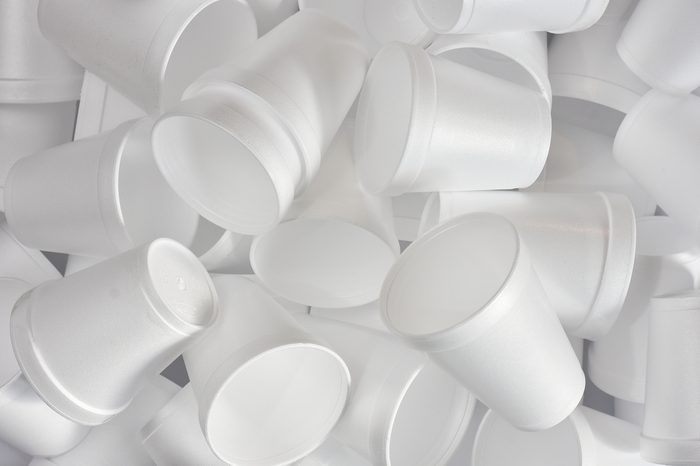
Styrofoam
Lots of municipalities have begun banning this common coffee cup and takeout container material. Comprised of a petroleum-based plastic called polystyrene foam, styrofoam takes a staggering one million years to come apart in the airless, lightless environment of the landfill. Even when it does get exposure to the sun and wind, it never really decomposes; instead, it breaks into bits that are often consumed by wildlife—tragic, because this is one of 15 well-established carcinogens for animals and humans
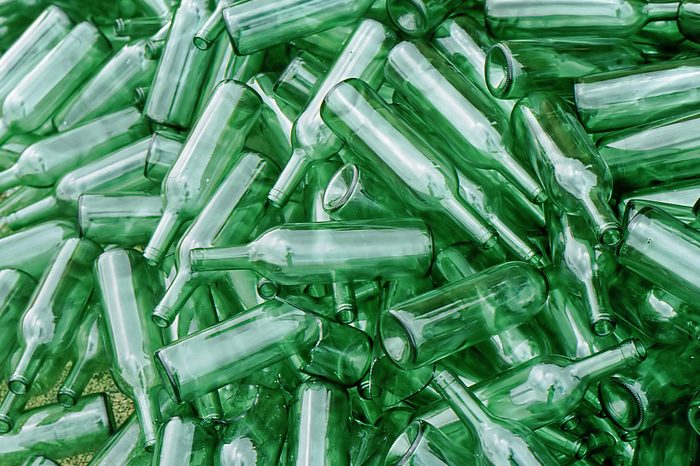
Glass bottles
You know what else takes one million years to decompose? Glass bottles, according to the Environmental Protection Agency (EPA). Which is why, once again, recycling is such a critical choice. Additionally, the energy that’s saved by making a new bottle from an old one—rather than from scratch—will power a 100-watt lightbulb for four hours.

Ziploc bags
These incredibly handy storage items are just as horrible for the health of the earth as disposable grocery bags; they have a way of ending up in combined sewage overflows and traveling to rivers and oceans—and often into the bellies of seabirds and whales. If they’re contained to landfill, they’ll spend the next 500-1,000 years decomposing.
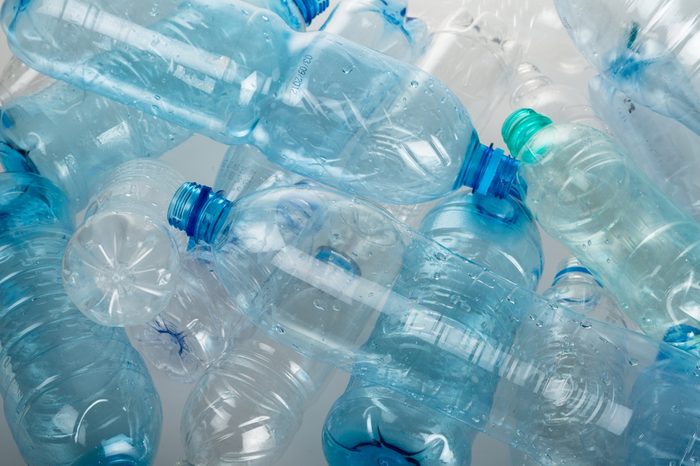
Plastic bottles
While not quite as durable as plastic bags, these ubiquitous bottles are still going to outlast you and everyone you know. On average, these bottles take at least 450 years to decompose, and they seem to be spending a lot of that time floating in our oceans and dispersing plastic particles that are sickening marine life and altering marine ecosystems. Do yourself and the fish a favor and recycle these bottles. Better yet, switch over to reusable water bottles.
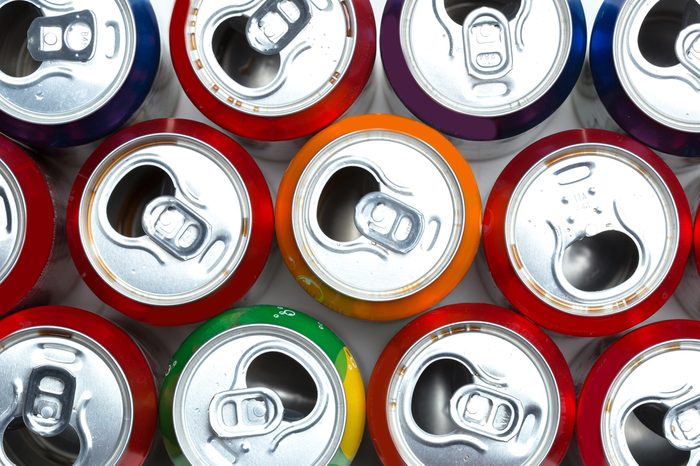
Aluminum cans
Sure, a disposable plastic bottle takes up to 450 years to decompose in a landfill. But if you think you’re saving the earth by choosing a beverage in a can instead, think again. Although aluminum is easily recyclable (and requires less energy to reform than to extract from the ground), plenty of cans still make their way into the trash and on to the municipal dump, where they can spend some 200 years breaking down.
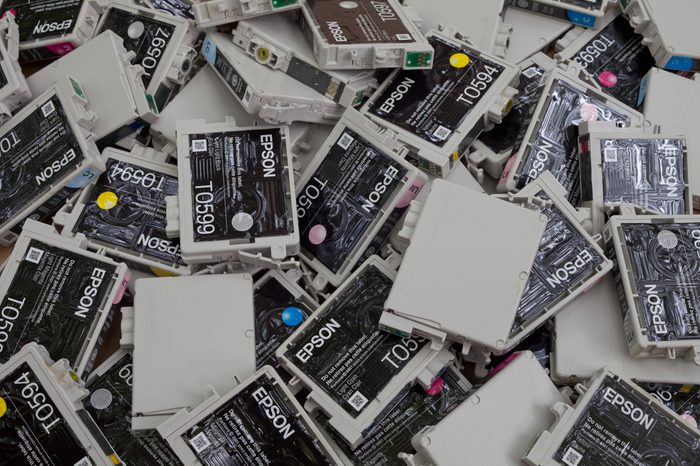
Ink cartridges
All the toxic labeling on your ink cartridges may have clued you into the potential damage they can cause the ecosystem; they can leak harmful chemicals into the soil and groundwater, which is why it’s wise to take advantage of store recycling programs common at office supply stores. Another reason: The cartridges take anywhere between 450 and 1,000 years to erode entirely.
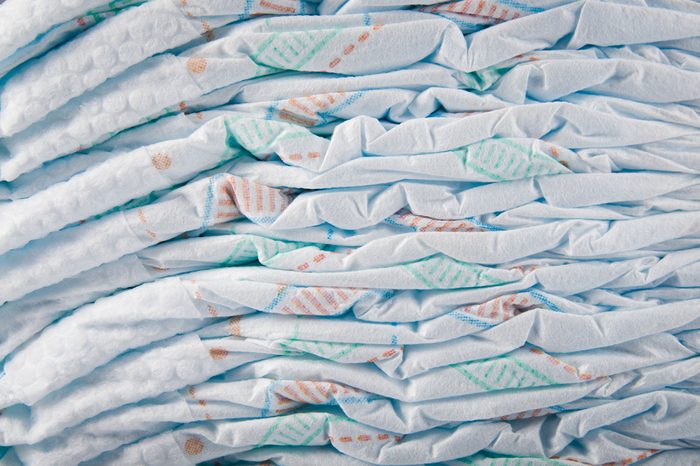
Disposable diapers
Every year, Americans toss a staggering 20 billion diapers—both the kind used on infants and those for the elderly. They add up to 3.5 million tons of waste, according to the EPA. As if that weren’t horrifying enough, this waste takes 500 years to decompose, during which time it releases toxic chemicals into the air we breathe and the water we drink; in the United States alone, 200,000 trees a year are chopped down just to make disposable diapers.
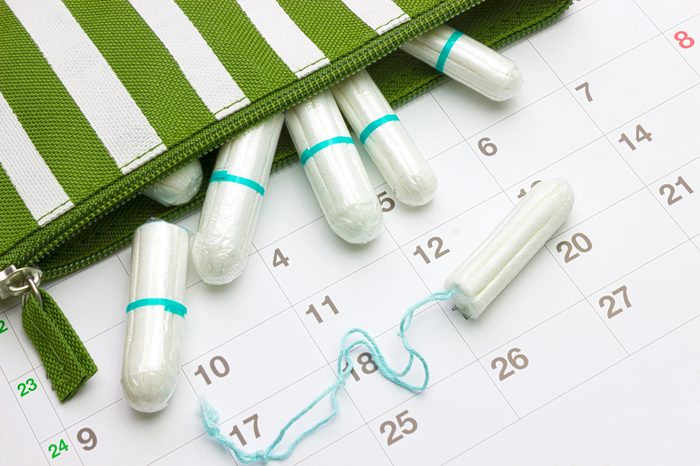
Tampons and sanitary pads
The average woman uses 11,000 disposable tampons or sanitary pads in her lifetime, almost all of which incorporate plastic in some way. Tampons in their wrappers and in some cases, applicators; pads in their packaging as well as in their fabric. Needless to say, they take a long time to break down—about six months for tampons, 25 years for applicators (if they’re not eaten by marine life first), and up to 800 years for pads. Luckily, there are a lot of eco-friendly alternatives currently on the market.
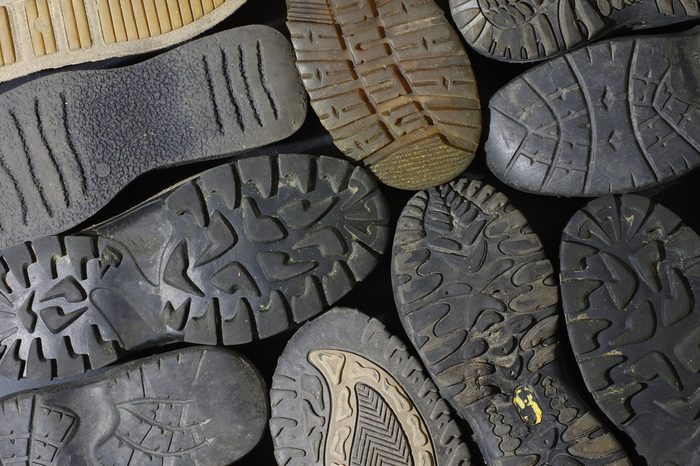
Rubber shoe soles
Rubber may come from milky white tree sap (a.k.a. latex), but once again, just because it’s natural doesn’t mean it reverts to its natural state quickly. In fact, the soles of your rubber boots and shoes will be in the landfill long after you’ve gone to the great beyond: It can take up to 80 years to break down.
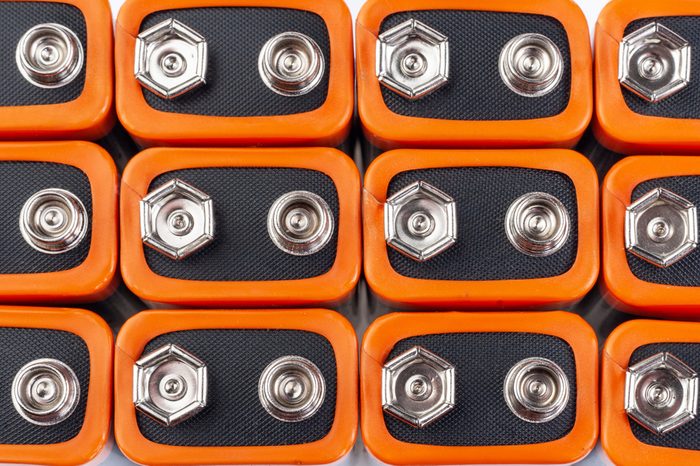
Batteries
AAA or 9V—no matter which power cells you use—every time you throw one into the trash you’re contributing to the billions of batteries going to landfills every year in the United States alone. Once there, they take about 100 years to decompose, and that decomposition leaks toxic materials into the environment. This is which is why the EPA strongly urges battery recycling as well as the use of rechargeable batteries.

Leather
We love leather products for their beauty and durability, but we’re also a little too quick to send out-of-fashion shoes and belts to the landfill, rather than the Goodwill or a textile recycling center. You might think leather has zero negative environmental impact, but the tanning process increases the material’s durability, which means it can take about 50 years to decompose.

Paper
Paper must be a quick-rotting substance, right? Not necessarily. If you choose to place it in your trash can instead of your recycling bin, it will spend up to 5 months slowly turning back into pulp, thanks to the low-oxygen, bacteria-free environment of the landfill—it’s slowed even more thanks to all the paper being added every day. And that doesn’t even take into account the effects of the toxic chemicals in the inks used by glossy magazines and other publications.
